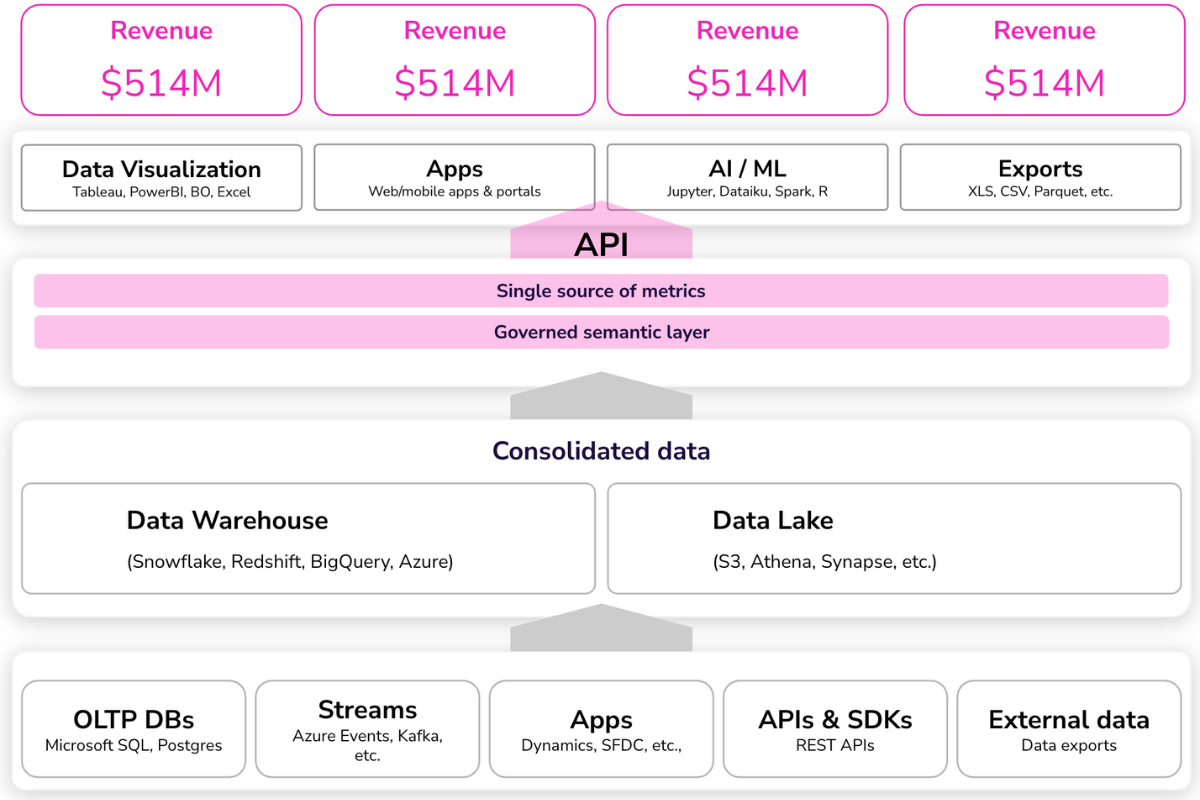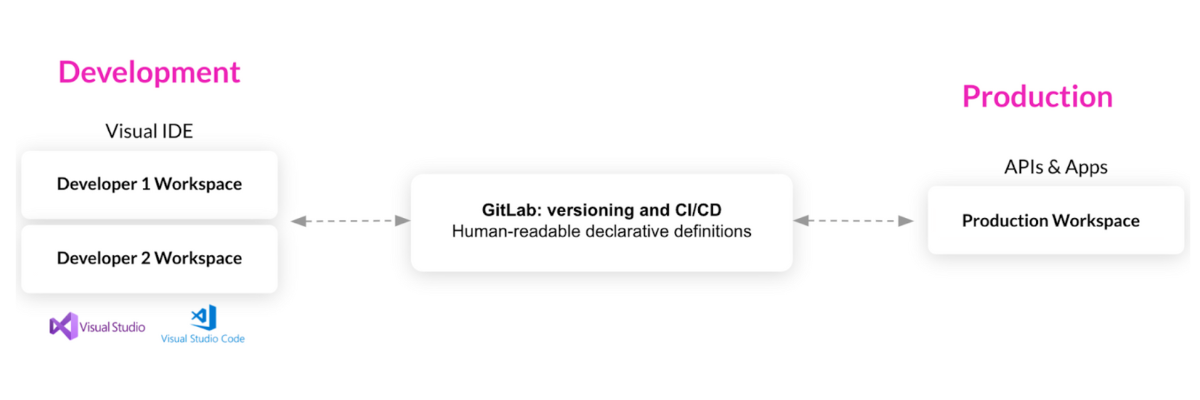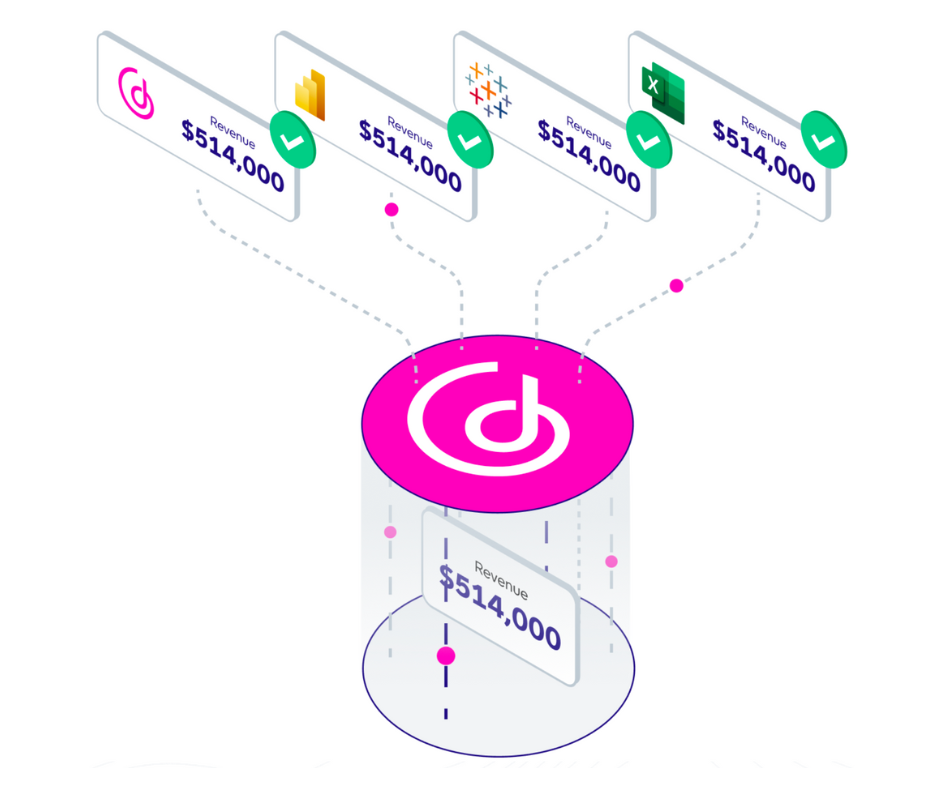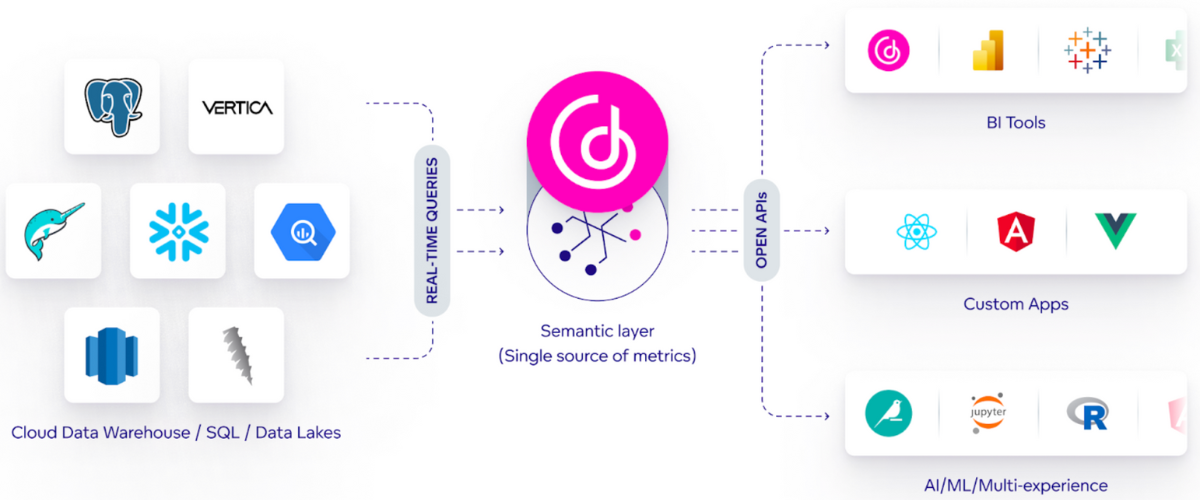API-First and Headless BI | What You Need to Know
Written by Lauri Hänninen |

The traditional business intelligence (BI) stack is built on decades of legacy technologies that don't fit the new wave of data consumption. As organizations move from traditional desktop BI to cloud-based solutions, there is an evolution in terms of architecture and the way analytics is delivered.
The ever-growing number of data consumers and use cases requires companies to be able to provide analytics in an agile manner – to developers, end users, and customers – to support their rapidly changing business needs.
We need new ways to build analytics to adapt to this new wave of data consumption. By using an API-first approach and headless BI, we can build analytics solutions to share consistent data with all consumers in the way they want to consume it. Thus, headless BI and API-first analytics platforms are must-haves for companies that want to achieve the flexibility required by modern analytics.
What does API-first mean?
API-first is an approach to product development where APIs are viewed as first-class citizens. The approach concentrates on building reusable and easily accessible APIs that client applications can use and consume. Traditionally, companies would first develop the product and then add APIs on top of it. In API-first, this mindset is reversed — APIs are built first and placed at the center of the product. By doing so, companies ensure that everything in the product is consumable via APIs.
What is headless BI?
Headless BI is a newly introduced data analytics architecture concept to interact and consume metrics in the modern data stack. Headless BI is an analytical back-end that makes standardized metrics accessible via APIs, SDKs, and standard protocols. It is built using the API-first approach allowing all the analytical definitions and functions to be available through well-documented, declarative APIs.

In traditional BI, the backend (the “body”) is tightly coupled with the platform’s UI (the “head”). Because other tools cannot access the metrics defined in the traditional BI, each separate tool your end users need must have their own metric definitions which they can use. In headless BI, the backend and the presentation layer are decoupled, allowing metric definitions to be consumed by any number of different heads — data tools, ML models, and applications. And because every head accesses the same source of metrics, headless BI ensures that everyone in your organization — employees, customers, and partners — works with the same consistent definitions regardless of what front end they use.
Why not try our 30-day free trial?
Fully managed, API-first analytics platform. Get instant access — no installation or credit card required.
Get startedWhy do API-first and headless BI matter in analytics?
Currently, companies are facing situations where consistent metrics need to be shared and made available for various applications and users — with varying levels of technical skills — to make better business decisions. But the problem is not only making metrics available; companies are also struggling to develop analytics solutions and data applications in a modern way.
Most analytics platforms are not designed to support software development best practices because we’re not able to access and manage the code we create when we build analytics with the platforms. API-first analytics changes this paradigm by allowing us to read and write all the underlying metadata of the platform — in a declarative format — and providing open APIs to automate the ongoing delivery process.
Analytics platforms built following the API-first approach and supporting the headless BI use case can help companies with these pain points and enable users to be more productive in their domains. Now, let’s see how API-first and headless BI can help different personas succeed in their roles.
Developers
Declarative APIs allow developers to manage and integrate their analytics solutions like any other application source code. Data teams can integrate analytics development into their CI/CD processes and work in parallel to version, merge, automatically test, and roll out updates and new data products to production. And because all analytics definitions are consumable via open APIs, they are easy to reuse or repurpose using templates. For example, when there is a need to build a new data application, developers can avoid starting from scratch by leveraging the analytics they’ve already created.

By serving metrics over APIs, API-first analytics allow developers to take the advantage of the developer tools and UI frameworks of their choice when building data applications, portals, and business processes. They do not need to know how to join tables or data sets to create metrics because they can just consume the metrics from the headless BI platform and combine them as they need to get the outcome they require. Thus, they can concentrate on coding the needed interface while the platform handles the computations. With open APIs and open source SDKs (like Python and React), developers can build custom analytics experiences faster and expand them as needed.
End users
Decoupling the analytical backend and the presentation layer allows end users — analysts, data scientists, and business users — to use any data tool they see as the best fit for the job. Traditionally, data models and metrics had to be created for each tool separately, which is time-consuming and prone to errors. With headless BI, end users from different teams, departments, and regions can access and use standardized metric definitions from a single repository and yield correct results across the entire enterprise.

And because the decoupling makes the data stack front-end agnostic, end users can upgrade their data tools and applications when needed. Once they identify a need to switch from one tool to another — due to performance issues, pricing concerns, or technology advancements — they can easily connect it to the headless BI platform and continue analyzing the data without needing data teams to rebuild metrics for them.
How does GoodData fit in?
GoodData, after in-depth research and testing, re-engineered its analytics platform to support the API-first approach. By opening the platform to be consumed not just via its own UI but also third party interfaces, GoodData strives to meet the new wave of data consumption requirements.
GoodData’s API-first analytics platform, together with its Headless BI feature, enables companies to develop analytics solutions like any other software and provide consistent analytics to all end users and applications. As the leader in BI, GoodData provides flexible and customizable solutions for all end users, regardless of requirements or technical capability.

Looking for more from GoodData?
GoodData invites you to dive deeper into your journey by brushing up on the valuable insights we provide into our products and the business intelligence industry at large. Try GoodData’s fully managed, API-first analytics platform for free or read the following resources about the topic:
- Headless BI: Achieve Consistent Analytics Results
- What Is Real-Time Analytics?
- Building Real-time, Multi-tenant Analytics: 10 Questions and Answers
Why not try our 30-day free trial?
Fully managed, API-first analytics platform. Get instant access — no installation or credit card required.
Get startedWritten by Lauri Hänninen |
Subscribe to our newsletter
Get your dose of interesting facts on analytics in your inbox every month.
Subscribe